Results 10,411 to 10,420 of 12095
Thread: Anandtech News
-
03-10-20, 04:39 PM #10411
Anandtech: Philips's 346P1CRH Curved Monitor: 34 Inches, USB-C, Webcam, Ethernet, KVM
Philips has unveiled a new curved display aimed primarily at business users, while also offering some capabilities for entertainment as well. The Philips 346P1CRH monitor supports USB-C docking, an integrated KVM switch, a webcam, and an Ethernet port.
The Philips Brilliance 346P1CRH is a 34-inch LCD featuring a 3440×1440 resolution, 500 nits brightness, a 3000:1 contrast ratio, 4 ms response time, 178º/178º viewing angles, and a 100 Hz refresh rate with VESA’s Adaptive-Sync variable refresh rate technology on top. The monitor can display 16.7 million colors and reproduce 120% of the sRGB, 90% of the DCI-P3, and 88% of the Adobe RGB color gamut. Furthermore, the LCD is DisplayHDR 400 certified, which — in addition to Adaptive-Sync — will be nice bonuses for those who plan to use the product not only for work, but for entertainment as well.
Connectivity capabilities of the Philips 346P1CRH are among the key selling features of the device, as many people use multiple PCs and therefore need a decent set of connectors as well as an integrated KVM switch. The monitor can connect to hosts using one DisplayPort 1.4, an HDMI 2.0 port, and a USB Type-C connector that can also deliver up to 90 W of power. Meanwhile, the display also has a DP output for multi-monitor configurations. In addition, the LCD has quad-port USB 3.2 hub, a GbE port, 5W speakers, a 2 MP Full-HD camera with a built-in microphone, and a headphone jack output.
When it comes to ergonomics, the Philips 346P1CRH monitor is equipped with a stand that can adjust height, swivel, and tilt. Meanwhile, since we are dealing with a curved monitor, it naturally only works in landscape mode.
Philips will start sales of the 346P1CRH already this month for the price of £499 in the UK.Philips 34-Inch Curved UltraWide Display Brilliance 346P1CRH Panel 34" VA Native Resolution 3440 × 1440 Maximum Refresh Rate 100 Hz Response Time 4 ms Brightness up to 500 cd/m² Contrast up to 3000:1 Backlighting W-LED Viewing Angles 178°/178° horizontal/vertical Curvature 1500R Aspect Ratio 21:9 Color Gamut sRGB: 120%
DCI-P3: 90%
AdobeRGB: 88%
NTSC: 98%Dynamic Refresh Rate Tech Adaptive-Sync Pixel Pitch 0.23175 mm² Pixel Density 110 PPI Inputs 1 × DisplayPort 1.4
1 × HDMI 2.0b
1 × USB-C with 90W PDAudio 3.5 mm output USB Hub 4 × USB 3.2 Type-A connectors Ethernet 1 GbE port Webcam 2 MP with IR sensors Stand Height: 180 mm
Swivel: -/+ 180 degree
Tilt: -5~25 degreeMSRP £499
Related Reading:
- Philips Unveils Brilliance 439P9H SuperWide 32:10 Curved Prosumer Monitor
- HP Launches Their S430c 43.4-Inch Ultrawide Curved Display
- Philips Brilliance 499P9H Ultra-Wide 49-Inch Monitor Now Available
- Philips Reveals 346B1C 34-Inch 100 Hz Curved UltraWide Monitor with USB-C Docking
- Philips Brilliance 272P7VUBNB: A Sub-$350 27-Inch 4K IPS Monitor with 65W USB PD & GbE
- HP’s E344c: A 34-Inch Curved Ultra-Wide Productivity Monitor
- Philips 328P6VU Professional 4K Display: DisplayHDR 600, USB-C, GbE
Source: Philips
More...
-
03-10-20, 10:44 PM #10412
Anandtech: Intel Puts Whiskey Lake on The Bonfire: Penny for the NUC
Intel has begun winding down sales of the majority of its Whiskey Lake-based 8th generation NUCs (NUC8 Series). This month the company issued a product change notification for the UCFF systems, establishing a plan for transitioning the systems to end of life (EOL) status. Like other EOL transitions, Intel is giving themselves and customers a bit of time to prepare, with the final shipments of the systems set to occur in July.
The list of SKUs to be discontinued includes such models as the NUC8I5INHJA, NUC8I5INHPA, NUC8I5INHP, NUC8I5INHX, NUC8I7INHJA, NUC8I7INHPA, NUC8I7INHP, NUC8I7INHZ, and NUC8I7INHX. Intel’s customers are recommended to make their final orders by April 30, 2020, with shipments set to end by July 2nd.
Interestingly, while Intel is discontinuing most of their Whiskey Lake-based NUCs, they aren't discontinuing all of them, at least not in a single go. This month's announcement only covers NUC8s using Core i5 and Core i7 chips; the Core i3 models are not part of the EOL plan.
Intel’s Whiskey Lake processors were introduced in August 18, 2018. These CPUs are still widely used by PC manufacturers, so it's a bit surprising to see Intel discontinue NUCs based on them so soon. But with the company using the same 14++ process for numerous other and newer parts, including Comet Lake and Coffee Lake, there is some definite redundancy in Intel's chip stack. As well, the company is still working to meet the overall demand for chips made on that process.
Related Reading:
Intel Axes 10nm CPU Based NUC
Intel Confirms Comet Lake-Based NUC 10 ‘Frost Canyon’ UCFF PCs
Intel’s Islay Canyon Mini NUCs Available: Whiskey Lake, Radeon 540X, 8GB LPDDR3
EGlobal's NUC-Like PC Packs Intel’s Unlocked Hex-Core i7-8750HK CPU
Source: Intel
More...
-
03-11-20, 11:03 AM #10413
Anandtech: Load Value Injection: A New Intel Attack Bypasses SGX with Significant Per
Microarchitectural attacks have been all the rage. For the past two years, we’ve seen attacks like Meltdown, Spectre, Foreshadow/L1TF, Zombieload, and variants all discuss different ways to probe or leak data from a victim to a host. A new attack, published on March 10th by the same research teams that found the previous exploits, turns this principle on its head, and allows an attacker to inject their own values into the victim’s code. The data injection can either be instructions or memory addresses, allowing the attacker to obtain data from the victim. This data injection bypasses even stringent security enclave environments, such as Intel’s Software Guard Extensions (SGX), and the attackers claim that successful mitigation may result in a slowdown of 2x to 19x for any SGX code.
More...
-
03-11-20, 04:10 PM #10414
Anandtech: MSI Extends Product Warranties by Two Months Due to Coronavirus
The outbreak of the SARS-CoV-2 coronavirus has already caused the cancellation several major trade shows and will have other kinds of impacts on the high-tech industry. And while the full repercussions are far from over, we're now seeing what may be the oddest of them all: warranty extensions. Citing this outbreak and a desire to give its customers some peace of mind, MSI this week announced a complimentary extension of its product warranties. As long as owners meet certain conditions, warranties originally set to expire this month have now been extended by two months.
All told, MSI is issuing two month warranty extensions on all its all-in-one (AIO) desktops, desktops, motherboards, monitors, as well as cases (and PC cabinets). This covers many of its consumer products, but notably leaves the company's popular laptops out of the program. As previously mentioned, the warranty extension is being offered on products with original warranties set to expire by March of 2020 – or in other words, this month.
While the extensions are largely automatic, owners do need to fulfill a couple of conditions. First, the program is only being offered in certain countries: South Korea, Italy, Germany, France, Japan, Spain, USA, Switzerland, Singapore, UK, Hong Kong, Sweden, Norway, Netherlands, Australia, Kuwait, Bahrain, Malaysia, Belgium, Canada. China isn't being directly covered by this program, but MSI is already offering an independent program there. Second, owners need to be enrolled in the MSI Rewards Program, MSI's warranty registration and rewards program.
By extending its product warranties, MSI can address several problems at once. Most importantly, perhaps, is that it means that product owners who need warranty service this month can put off service for another month or two, hopefully when the viral situation has subsided. This essentially pauses (or at least greatly reduces) MSI's warranty operations at a time when they are likely not operating at full capacity to begin with, and minimizes any interactions that could spread the disease. This also lowers the immediate demand for components and/or spare parts, which comes as manufacturing operations in China are still getting back on track.
And of course, the value of good will (and the free press) is immeasurable. MSI is ultimately on the hook for two more months of hardware failures, which will have a very real cost in terms of support. But it is a welcome piece of good news in a month that could use some.
Related Reading:
- Mobile World Congress 2020 Cancelled
- GDC & Open Compute Project Global Summit Latest Events Scrubbed Due to Coronavirus
- NVIDIA's 2020 GTC Becomes Latest Coronavirus Event Casualty: Now Digital-Only
- Computex 2020: Still on Schedule Despite Coronavirus, But Other Events Have Restrictions
Source: MSI
More...
-
03-11-20, 07:10 PM #10415
Anandtech: AMD Officially Launches the Radeon RX 590 GME For China: RX 580 Rides Agai
While AMD’s Polaris family of GPUs have surprised us in a few different ways, perhaps the most impressive aspect has been their sheer longevity. First introduced in 2016 as a 14nm update to AMD’s GPU lineup, the GCN 3-derrived chips were the backbone of AMD’s mainstream video cards for over three years. And while it seemed like they’d finally be put out to retirement with the launch of AMD’s 7nm Navi chips late last year, Polaris is getting (another) new lease on life, this time in a video card that’s being released exclusively in China.
Dubbed the Radeon RX 590 GME, the new card isn’t receiving any formal fanfare for its release. But AMD has added it to their product stack and updated their Chinese-language pages accordingly.
So what is Radeon RX 590 GME exactly? Unfortunately, as has become a recurring theme with China-only video cards, AMD and its partners are playing fast and loose with product names. Despite the name, the RX 590 GME is notably slower than a proper RX 590 – about 10% slower, on paper – making it an RX 590-lite at best, or more pragmatically, a mildly overclocked RX 580.
In fact, while AMD hasn’t confirmed which specific Polaris GPU the card is using, the specifications are closer to an RX 580 (Polaris 20) than they are an RX 590 (Polaris 30). The RX 590 GME ships with the RX 580’s 1257MHz base clock, but offers a 40MHz higher boost clock, topping out at 1380MHz. The card’s (listed) specifications are otherwise identical to the 590/580, including a full 36 CU configuration and 8GB of GDDR5 VRAM on a 256-bit bus that’s clocked at 8Gbps.AMD Radeon RX Series Specification Comparison AMD Radeon RX 590 GME AMD Radeon RX 590 AMD Radeon RX 580 AMD Radeon RX 5500 XT CUs 36
(2304 SPs)36
(2304 SPs)36
(2304 SPs)22
(1408 SPs)Texture Units 144 144 144 88 ROPs 32 32 32 32 Base Clock 1257MHz 1469MHz 1257MHz 1607MHz Game Clock N/A N/A N/A 1717MHz Boost Clock 1380MHz 1545MHz 1340MHz 1845MHz Throughput (FP32) 6.4 TFLOPs 7.1 TFLOPs 6.2 TFLOPs 5.2 TFLOPs Memory Clock 8 Gbps GDDR5 8 Gbps GDDR5 8 Gbps GDDR5 14 Gbps GDDR6 Memory Bus Width 256-bit 256-bit 256-bit 128-bit VRAM 8GB 8GB 8GB 4GB/8GB Transistor Count 5.7B 5.7B 5.7B 6.4B Typical Board Power N/A 225W 185W 130W Manufacturing Process GloFo 14nm? GloFo/Samsung 12nm GloFo 14nm TSMC 7nm Architecture GCN 4 GCN 4 GCN 4 RDNA (1) GPU Polaris 20? Polaris 30 Polaris 20 Navi 14 Launch Date 03/09/2020 11/15/2018 04/18/2017 12/12/2019 Launch Price N/A $279 $229 $199/$169
Otherwise, unverified third-party reports have claimed that the card is indeed using Polaris 20, and these specifications would be consistent with that.
On paper, this puts the peak performance of the card at just less than 3% ahead of the RX 580, which is similar to what AMD’s partners have previously been doing with their own factory overclocked cards. So the performance of the RX 590 GME is by and large a known quantity at this point, with the card set to offer just a bit more performance than AMD's well-tenured RX 580.
The big question, of course, is why AMD is releasing another Polaris 10/20/30 card almost 4 years after the GPU was first launched. With previous China-only cards this has been to fill specific market needs or to sell off excess stock, and both may be a factor here. Within AMD’s product stack, RX 580-class cards in particularly are wholly redundant; the newer 8GB RX 5500 XT delivers 8% better performance than those cards, which means the new RX 590 GME is going to be slower than AMD’s slowest 8GB Navi cards.
What the RX 590 GME offers that the RX 5500 XT doesn’t however is ease of availability. AMD continues to be somewhat capacity constrained on TSMC’s 7nm process – they have a lot of CPU demand to fill, never mind GPUs – whereas if AMD needed to fab more chips, GlobalFoundries’ 14nm lines are readily available. Furthermore, the RX 590 GME enjoys a lower bill of materials cost as far as memory is concerned: whereas the RX 5500 XT uses newer (and still more expensive) GDDR6, the Polaris-based 590 uses more readily available GDDR5.
Ultimately, while China is still a growing market for technology – both in terms of total scale and in how much consumers have to spend on individual products – it’s still primarily a market dominated by mainstream parts. So if AMD is looking to scrape together a cheaper offering to compete on a purely price/performance basis – and especially if they still have leftover chips lying around – then they could do worse than another Polaris 20 card. That said, they could definitely do better as far as the product name goes.
More...
-
03-11-20, 07:10 PM #10416
Anandtech: Micron Develops uMCP with LPDDR5 & 96L 3D NAND for Midrange 5G Smartphones
Micron this week has announced that it has started sampling the industry’s first multichip package (MCP) that integrates LPDDR5-6400 DRAM and 96-layer 3D NAND flash memory. The uMCP5 device is aimed at midrange 5G smartphones that require fast DRAM as well as high-performance storage.
Micron’s uMCP5 device packs 12 GB of LPDDR5-6400 memory in a dual-channel arrangement, 256 GB of 96-layer 3D TLC NAND storage with a UFS interface, as well as an onboard controller. The LPDDR5 dies are made on the company's 2nd Generation 10nm process technology, while the company hasn't commented on the NAND. Combined, the complete uMCP5 chip uses a 297-pin standard BGA package.
Overall, uMCP packages that integrate both DRAM and 3D NAND enable smartphone manufacturers to reduce the footprint that is needed for RAM and storage. Micron says that its uMCP5 uses 40% less space than two (separate) memory chips, while also providing a 50% increase of memory and storage bandwidth when compared to previous-generation solutions.
All told, Micron's latest uMCP devices come as demand for LPDDR5 is taking off, and demand for higher performance storage overall is booming. On top of 5G's faster speeds putting more demand on quick local storage, the latest handsets in general feature increasingly better cameras and displays than predecessors, all of which generates more data to load and store. So there's a need for faster memory and non-volatile storage, not only for 5G smartphones, but higher-end 4G/LTE smartphones as well.
Micron’s uMCP5 package is currently sampling to select partners.
Related Reading:
- Samsung Starts Production of 16 GB LPDDR5-5500 for Smartphones
- Micron Shipping LPDDR5 DRAM
- Samsung Starts Production of LPDDR5-5500 Devices: 12 GB of DRAM in a Smartphone
- Micron’s DRAM Update: More Capacity, Four More 10nm-Class Nodes, EUV, 64 GB DIMMs
- Micron Obtains License to Sell DRAM & NAND to Huawei
Source: Micron
More...
-
03-12-20, 11:49 AM #10417
Anandtech: The Ultimate Hacking Keyboard Review: A Truly Unique, Truly Expensive Keyb
Today we are having a look at the Ultimate Hacking Keyboard, the most overconfident and expensive mechanical keyboard that has ever found its way into our labs. Developed with IT professionals in mind, the keyboard is designed to maximize productivity and ease a tough workday, utilizing a rather unique 60% layout that can even be split in two. Coupled with the manufactuer's excellent software, it's an incredibly powerful keyboard. But be warned: the price tag for that power is even higher.
More...
-
03-12-20, 04:35 PM #10418
Anandtech: Logitech Reveals Wireless Charging 3-in-1 Dock
Nowadays many people use more than one mobile device that needs charging, but charging them using separate chargers is sometimes inconvenient since they use too many wires or power sockets and create a mess. After Apple had cancelled its universal AirPower wireless charging mat for three devices, numerous makers of wireless chargers came up with their own 2-in-1, 3-in-1, and even 4-in-1 charging docks. This week Logitech joined the club with its Powered Wireless Charging 3-in-1 Dock, that is also accompanied by a dedicated charging pad, as well as and a charging stand, for those who only need to charge one device at a time.
The Logitech Powered Wireless Charging 3-in-1 Dock is designed to charge a modern iPhone, an Apple Watch, and AirPods charging case simultaneously. The device has two triple-coil surfaces (flat pad and upright stand) that can deliver up to 10 W of power (each), as well as a knob for Apple Watch that can deliver up to 5 W of power for a total of 25 W. The dock is fully compliant with the Qi specification, so it can work with other Qi-compliant devices from manufacturers such as Samsung or LG. Furthermore, with two 10-W surfaces, it is possible to charge two smartphones using the regular phone stand as well as the pad for headset.
Logitech says that its "Powered"-series devices feature all kinds of protection, including foreign object detection, protection from overheating, and overcharging.
The Powered Wireless Charging 3-in-1 Dock is made polycarbonate as well as silicone, and comes in graphite or white. The unit costs $129.99, so it is quite a lot more expensive than some of the competing products from less well-known manufacturers.
In addition to the Wireless Charging 3-in-1 Dock, Logitech’s Powered family also includes Powered Wireless Charging Stand for $59.99, as well as Powered Wireless Charging Pad for $39.99. Both feature similar triple-coil internal designs and are rated for 10 W.
Related Reading:
- AirUnleashed Wireless Charging Mat: An Attempt at an Apple AirPower
- Apple Cancels AirPower Wireless Charging Mat
Source: Logitech
More...
-
03-12-20, 04:35 PM #10419
Anandtech: Oppo’s Find X2 Pro 5G Debuts: S865, 6.7-Inch 120 Hz AMOLED, Periscope Came
One of the bright sides of sad situations such as event cancellations like MWC, is that vendors don't have to compete for attention against other vendors announcements within a short timeframe, instead choosing their own launch dates and events. Last week Oppo did exactly this, having unveiled its new top-of-the-range handsets: the Find X2 and the Find X2 Pro. Both models rely on the latest Snapdragon 865 platform from Qualcomm, and come with support for 5G connectivity, with the Pro model also sporting the company’s signature periscope camera that supports 5X optical zoom and ability to shoot 12 MP RAW images.
As expected for this year’s flagship smartphones, the Oppo Find X2 series uses the new Qualcomm Snapdragon 865 SoC that is paired with 8 GB of DRAM, as well as 128 GB, 256 GB, or 512 GB of UFS 3.0 storage. Both the regular Find X2 and Find X2 Pro smartphones are equipped with a 6.7-inch FullVision AMOLED display with a 3168×1440 resolution, a corresponding 19.5:9 aspect ratio, 800 nits luminance (probably regular, not peak HDR), as well as a 120 Hz refresh rate, which should be the phone's key feature. The screen can display 100% of the DCI-P3 color gamut and is covered with Corning’s Gorilla Glass 6 for protection.
The top-of-the-range Oppo Find X2 Pro handset is equipped with a triple-module camera setup that features Sony’s new IMX689 48 MP RGB sensor as the main unit, using Sony’s IMX586 48 MP as the ultrawide sensor, and a periscope telephoto camera that features a 5x optical zoom (10x hybrid zoom, 60x digital zoom) that is powered by a 13 MP sensor.
Courtesy to the complex triple-module camera, the device can shoot pictures in 12 MP RAW format that allows to edit images heavily using appropriate software on the PC. The vanilla Find X2 uses Sony’s IMX586 48 MP RGB sensor, Sony’s IMX708 12 MP ultrawide sensor, and a 13 MP telephoto camera without periscope. Both phones have OIS on their primary and telephoto modules.
Imaging capabilities are not the only differences between the regular Find X2 and the Find X2 Pro smartphones. Without any doubts, both are premium handsets, both use aluminum frames, and the former X2 comes in a ceramic or glass back, whereas the latter X2 Pro comes in ceramic or leather back, which is a quite rare feature.
Furthermore, while the vanilla version is IP54 splash proof, the Pro model is dust/water resistant (IP68-rated) and can survive for 30 minutes at a 1.5-meters depth. The devices are regular "plus-sized" with 74.4-74.5mm device widths, and weigh from 187 grams to 207 grams, depending on the exact SKU.
On the wireless connectivity side of matters, the Oppo Find X2 smartphones support Wi-Fi 6, Bluetooth 5.1, and NFC. Meanwhile, the handsets lack headphone jacks, only having a USB 3.1 Type-C connector for connectivity and charging. Also, the phone has an under-display fingerprint reader.
Oppo’s Find X2 in Ocean Glass and Black Ceramic will be available prices starting €999, whereas the Find X2 Pro in Vegan Leather Orange will cost €1,199. Both smartphones will be available in May.Oppo's Find X2 Series Find X2
CPH2023Find X2 Pro
CPH2025SoC Qualcomm Snapdragon 865
1x Cortex A77 @ 2.84GHz 512KB pL2
3x Cortex A77 @ 2.42GHz 3x 256KB pL2
4x Cortex A55 @ 1.80GHz 4x 128KB pL2
4MB sL3GPU Adreno 650 @ 587 MHz DRAM 8 GB
12 GB (w/ 256 GB)12 GB Storage 128 GB UFS 3.0
256 GB UFS 3.0256 GB UFS 3.0
512 GB UFS 3.0Display 6.7" FullVision AMOLED
3168 × 1440 (19.5:9)
120 Hz
800 nits
DCI-P3: 100%
Corning Gorilla Glass 6Size Height 164.9 mm 165.2 mm Width 74.5 mm 74.4 mm Depth 8.0 mm 8.8 mm (ceramic)
9.5mm (leather)Weight 196 grams - ceramic
187 grams - glass207 grams - ceramic
200 grams - leatherBattery Capacity 4200 mAh 4260 mAh Wireless Charging - - Rear Cameras Main Sony IMX586
48 MP 1/2" 0.8µm
f/1.7 w/OISSony IMX689
48 MP 1/1.4" 1.12µm
f/1.7 w/OISUltraWide Sony IMX708
12 MP 1/2.4"
f/2.2 16mm
120° field of viewSony IMX586
48 MP 1/2.0" 0.8µm
f/2.2 17mm
120° field of viewTelephoto 13 MP
f/2.4 52mm
w/OIS"Periscope"
13 MP 1/3.4" 1.0µm
5x optical zoom
w/OISFlash Dual-LED dual-tone flash Front Camera 32 MP 1/2.8" 0.8μm
f/2.4I/O USB 3.1 Type-C
Under-screen fingerprint readerWireless (local) Wi-Fi 6
Bluetooth 5.1Cellular GSM, CDMA, HSPA, 4G/LTE, 5G Splash, Water, Dust Resistance IP54
splash proofIP68
dust/water resistant
up to 1.5 meters for 30 minutesDual-SIM Single nano-SIM/nano-USIM Launch OS Android 10 with ColorOS 7.1 Launch Price Starting at €999 Starting at €1,199
Related Reading:
- The Oppo Reno Ace: 90 Hz AMOLED 6.5-inch HDR10+ with 65W Charging
- The OPPO Reno 10x Zoom Review: Bezeless Zoom
- Zoom Zoom: Testing 10x Hybrid Zoom in Dublin with the Huawei P30 Pro and Oppo Reno 10x Zoom
- Oppo Demonstrates 5G Smartphone at MWC 2019
- Qualcomm Announces Snapdragon 865 and 765(G): 5G For All in 2020, All The Details
Sources: Oppo, GSMArena
More...
-
03-13-20, 08:41 AM #10420
Anandtech: Samsung Galaxy S20 Ultra (Snapdragon 865) Quick Performance Preview: Impre
Samsung's Galaxy S20 series phones have been available since last Friday in markets such as the US. And earlier this week we also finally received a unit, in the form of a North American, Snapdragon 865-based Galaxy S20 Ultra. While our review is already underway, we’re also still waiting for public availability in Europe in order to get our hands on our Rest of World, Exynos 990 variant, so that we can take a comprehensive look at both variants of the S20 series. As we've seen in previous years, there have been some pretty significant differences between the Snapdragon and Exynos models at times, thanks to the SoC selection impacting everything from performance to image processing.
But first things first: since we have a bit of a lead time with the Snapdragon unit, we wanted to at least publish the performance figures for this model ahead of the full review, to temporarily satisfy everyone’s curiosity on at least this aspect of the phone.
More...
Thread Information
Users Browsing this Thread
There are currently 25 users browsing this thread. (0 members and 25 guests)




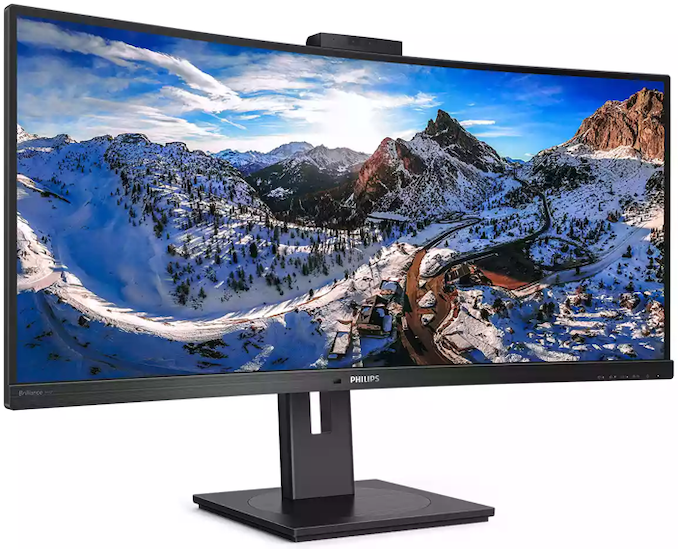
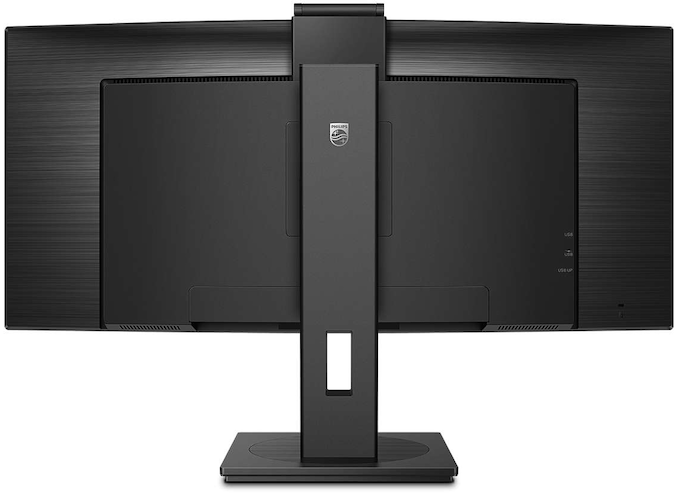
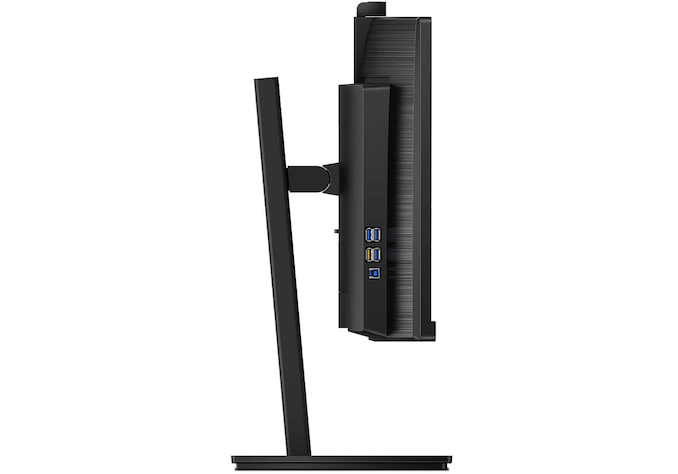

 Quote
Quote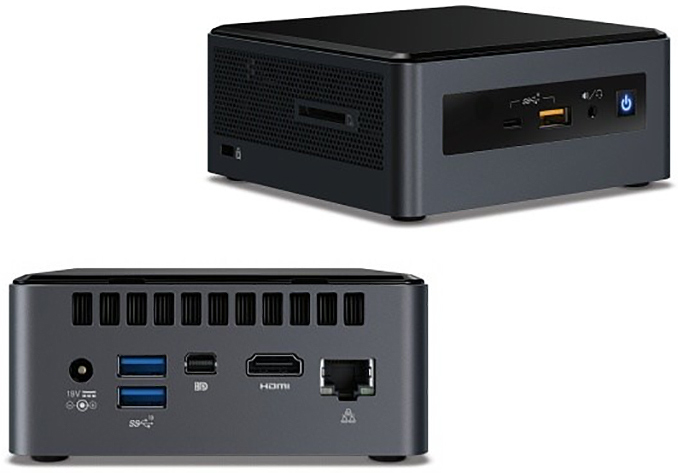
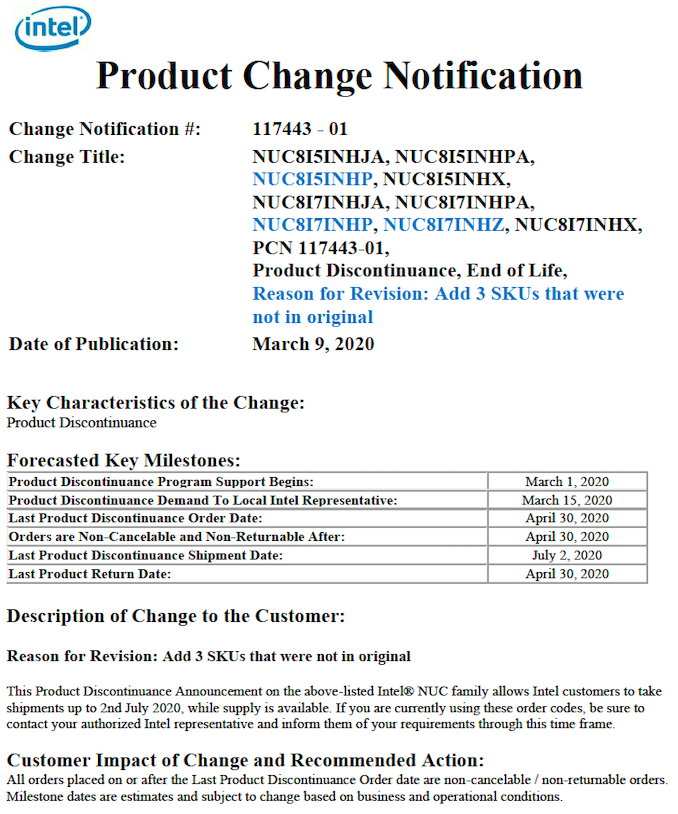

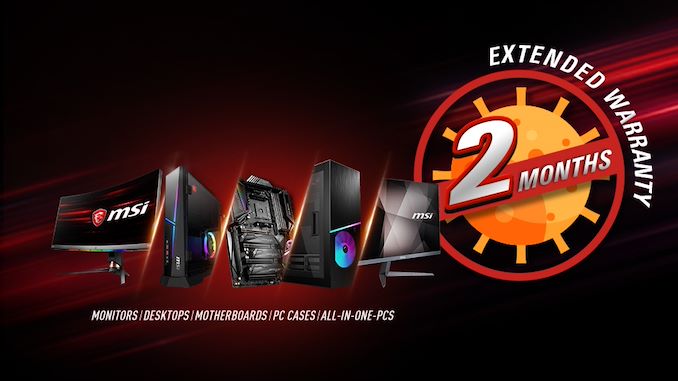
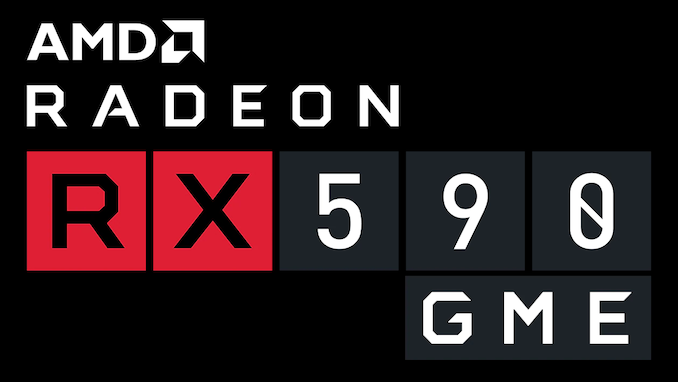
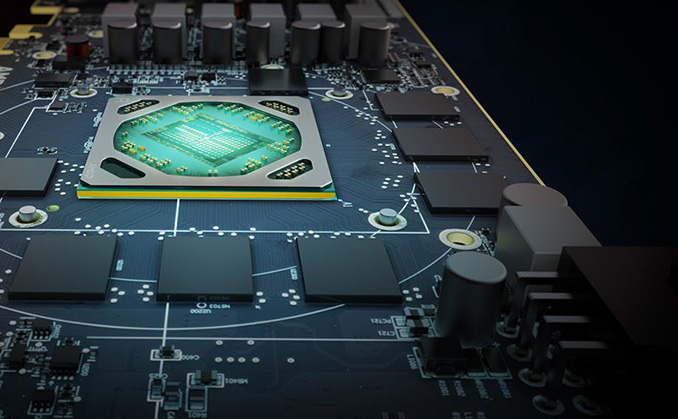
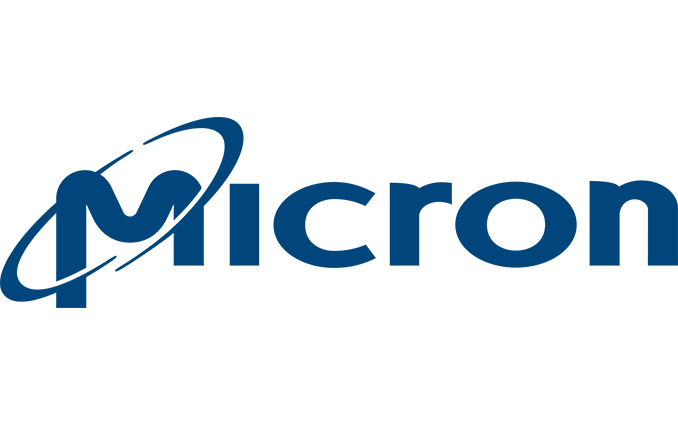

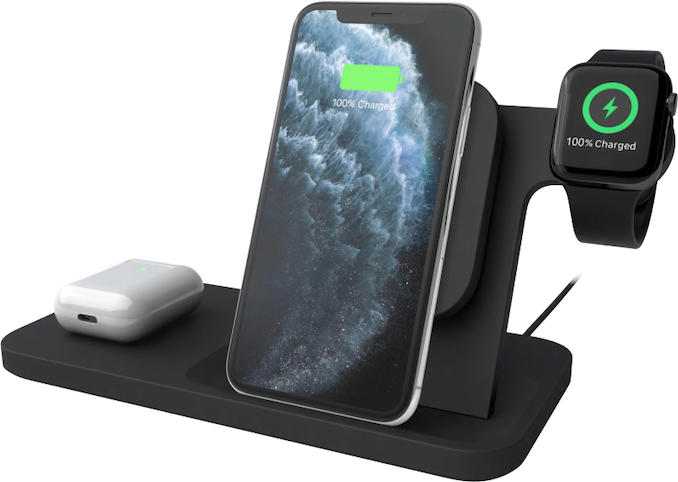
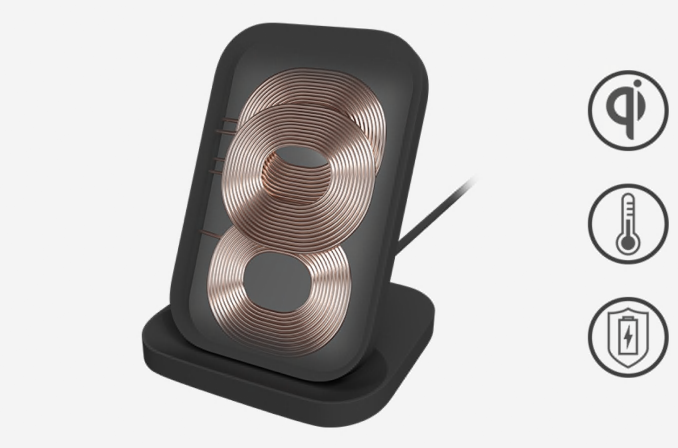
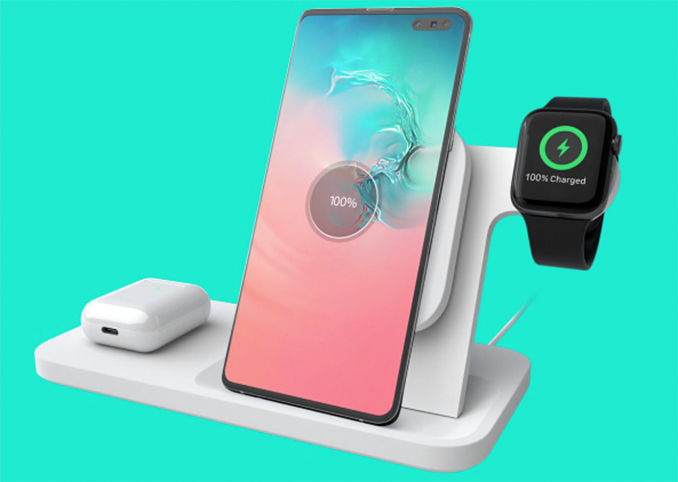
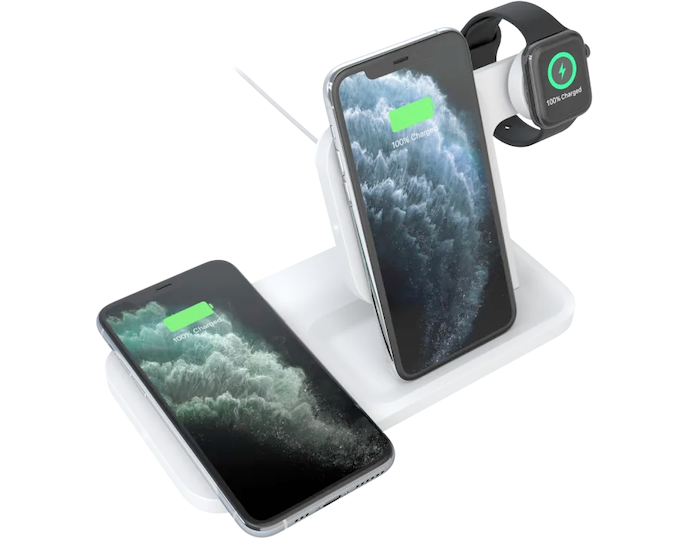
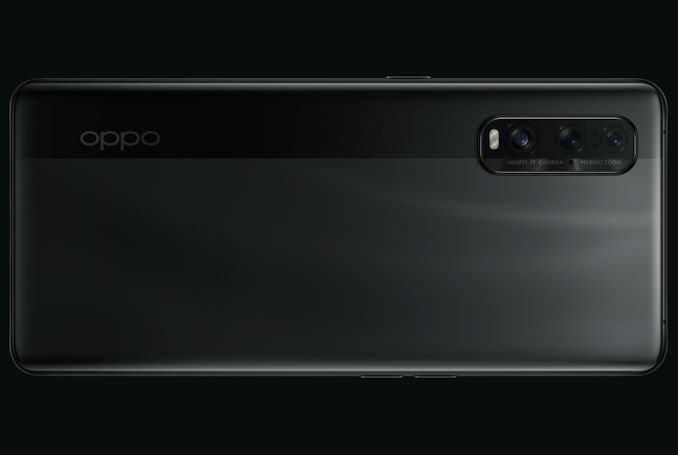

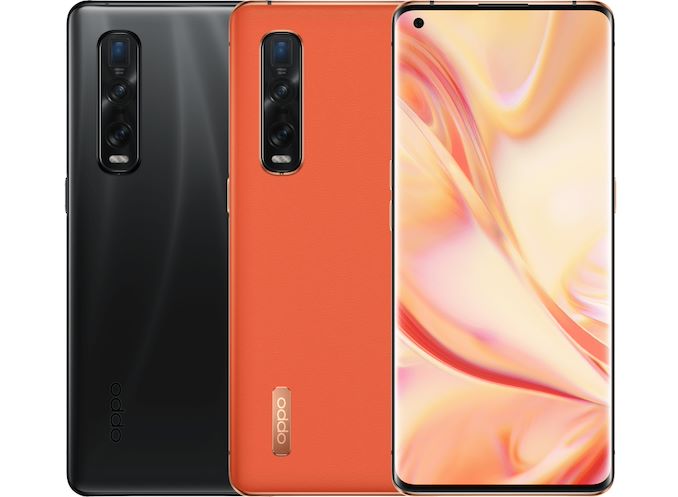

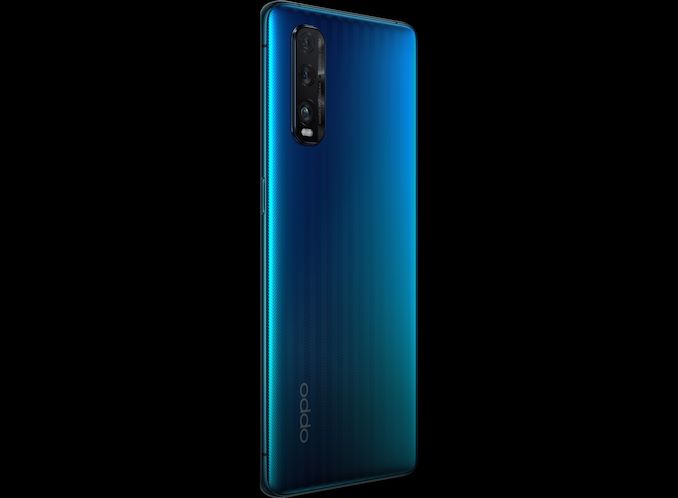
















Bookmarks